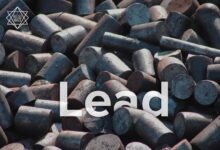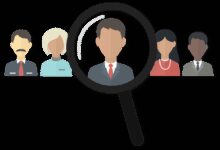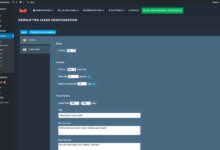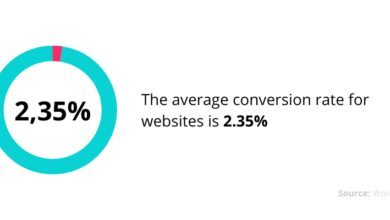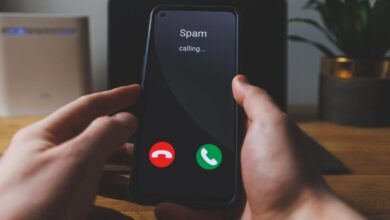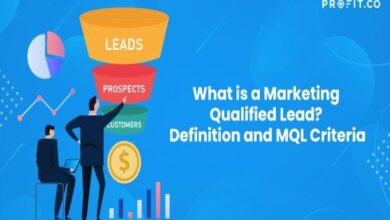Sales Funnel Secrets: 7 Powerful Steps to Skyrocket Conversions
Ever wonder why some businesses convert visitors like magic while others struggle? The secret lies in a well-optimized sales funnel. Let’s break down how it works and how you can master it.
Sales Funnel Basics: What It Is and Why It Matters

Understanding the sales funnel is the first step toward building a predictable, scalable revenue engine. At its core, a sales funnel is a visual representation of the customer journey—from first awareness to final purchase. It’s not just a marketing buzzword; it’s a strategic framework used by top-performing companies to guide prospects through a structured buying process.
The Concept Behind the Sales Funnel
The idea of a sales funnel stems from the principle that not every person who encounters your brand will buy immediately. Instead, potential customers go through a series of stages where they become aware, show interest, make a decision, and finally take action. This process mirrors the shape of a funnel: wide at the top (many prospects) and narrow at the bottom (fewer, but committed buyers).
- The funnel metaphor helps businesses visualize customer flow.
- Each stage requires different messaging and strategies.
- It enables teams to identify leaks and optimize performance.
Why Every Business Needs a Sales Funnel
Without a clear sales funnel, businesses operate reactively—chasing leads without a system. A structured funnel brings clarity, improves conversion rates, and increases customer lifetime value. Whether you’re running an e-commerce store, a SaaS platform, or a local service business, mapping out your sales funnel is non-negotiable for sustainable growth.
“A sales funnel isn’t just about making sales—it’s about creating a repeatable process that turns strangers into loyal customers.” — Neil Patel, Digital Marketing Expert
The 7 Stages of a Modern Sales Funnel
Gone are the days when the sales funnel was just awareness, interest, decision, and action. Today’s digital landscape demands a more nuanced approach. Here’s a breakdown of the seven key stages that define a high-converting sales funnel in 2025.
1. Awareness: Attracting the Right Audience
This is the top of the funnel (TOFU), where potential customers first learn about your brand. The goal here isn’t to sell—it’s to educate and engage. People enter this stage through various channels like search engines, social media, ads, or word-of-mouth.
- Use SEO-optimized blog content to capture organic search traffic.
- Leverage social media platforms to increase visibility.
- Create viral-worthy content such as infographics or short videos.
For example, a fitness brand might publish a blog titled “10 Home Workouts for Busy Professionals” to attract people searching for quick exercise routines. This content builds awareness without pushing a product.
2. Interest: Capturing Attention and Building Trust
Once someone knows you exist, the next challenge is keeping them engaged. This stage is about nurturing curiosity and establishing credibility. Visitors are evaluating whether your solution aligns with their needs.
- Offer lead magnets like free guides, webinars, or checklists.
- Use email marketing to deliver value over time.
- Engage through retargeting ads and personalized content.
A software company might offer a free trial or demo to let users experience the product firsthand. This lowers the barrier to entry and builds trust through transparency.
3. Consideration: Helping Prospects Evaluate Options
At this point, the prospect is comparing solutions. They know their problem and are researching possible fixes. Your job is to position your offering as the best choice.
- Provide detailed product comparisons and case studies.
- Highlight unique selling propositions (USPs) clearly.
- Use testimonials and reviews to reinforce credibility.
According to HubSpot, 77% of B2B buyers say they’ve chosen a vendor based on the quality of content provided during the consideration phase. This shows how critical informative, non-salesy content is.
4. Intent: Identifying Purchase Readiness
This stage is often overlooked but crucial. Intent signals that a prospect is ready to buy—they’re just finalizing details. They might add items to a cart, request a quote, or schedule a consultation.
- Monitor behavioral triggers like cart additions or page revisits.
- Send timely follow-up emails with limited-time offers.
- Use live chat support to answer last-minute questions.
Tools like Hotjar can help track user behavior and identify intent signals. For instance, if someone spends over 3 minutes on your pricing page, they’re likely close to making a decision.
5. Purchase: Closing the Deal
This is the conversion moment—the bottom of the funnel (BOFU). The prospect becomes a paying customer. But this stage isn’t just about the transaction; it’s about making the process seamless and frictionless.
- Optimize checkout pages for speed and simplicity.
- Offer multiple payment options and clear return policies.
- Reduce form fields and eliminate distractions.
Research from Shopify shows that reducing form fields from 11 to 4 can increase conversions by up to 120%. Small tweaks can have massive impacts.
6. Retention: Turning Customers into Repeat Buyers
The funnel doesn’t end at purchase. In fact, retaining customers is often more profitable than acquiring new ones. This stage focuses on post-purchase engagement, satisfaction, and loyalty.
- Send onboarding emails to help customers get started.
- Offer loyalty programs or referral incentives.
- Collect feedback to improve the experience.
A study by Zendesk found that 87% of customers are willing to spend more with companies that provide excellent post-purchase support. Retention isn’t an afterthought—it’s a revenue driver.
7. Advocacy: Creating Brand Evangelists
The final stage transforms satisfied customers into advocates. These are people who voluntarily promote your brand through reviews, referrals, or social shares. Advocacy is the ultimate sign of a successful sales funnel.
- Encourage reviews with follow-up emails.
- Launch referral programs with tangible rewards.
- Feature user-generated content on your website and social media.
Companies like Dropbox grew exponentially by leveraging advocacy through their referral program, which gave users extra storage for inviting friends. Word-of-mouth, powered by a great experience, is the most powerful marketing tool.
Types of Sales Funnels for Different Business Models
Not all sales funnels are the same. The structure and flow depend heavily on your industry, product type, and customer behavior. Let’s explore the most common types of sales funnels used today.
Lead Generation Funnel
This funnel is designed to collect contact information from potential customers. It’s commonly used by service-based businesses, consultants, and B2B companies.
- Starts with a free resource (e.g., eBook, webinar).
- Requires an email address to access the content.
- Follows up with a nurturing email sequence.
The goal isn’t an immediate sale but building a relationship over time. For example, a financial advisor might offer a free retirement planning guide in exchange for an email, then nurture the lead with weekly tips.
E-Commerce Sales Funnel
This funnel is built for online stores. It guides visitors from product discovery to checkout and beyond.
- Begins with traffic from ads, SEO, or social media.
- Uses product pages, reviews, and scarcity tactics (e.g., low stock alerts).
- Includes upsells and cross-sells at checkout.
Amazon is a master of this model. Their funnel uses personalized recommendations, one-click ordering, and fast shipping to reduce friction and increase average order value.
Webinar Funnel
A highly effective funnel for high-ticket products or services. It uses live or pre-recorded webinars to educate and sell.
- Prospects register with their email.
- They attend a value-packed presentation.
- A limited-time offer is presented at the end.
This model works because it builds trust through education. According to GoToWebinar, conversion rates for webinar funnels can reach 20–35%, far above average.
How to Build a High-Converting Sales Funnel in 5 Steps
Building a sales funnel doesn’t have to be complicated. Follow these five proven steps to create a system that consistently generates results.
Step 1: Define Your Target Audience
You can’t build a funnel without knowing who you’re building it for. Start by creating detailed buyer personas—fictional representations of your ideal customers.
- Include demographics, pain points, goals, and online behavior.
- Use surveys, interviews, and analytics to gather insights.
- Segment audiences based on behavior or needs.
For example, a SaaS company might have two personas: a tech-savvy startup founder and a risk-averse enterprise manager. Each requires a different messaging approach.
Step 2: Map the Customer Journey
Once you know your audience, map out their journey from first touchpoint to purchase. Identify the channels they use, the content they consume, and the objections they might have.
- Use journey mapping tools like Miro or Lucidchart.
- Identify key decision points and emotional triggers.
- Align content and offers with each stage.
This step ensures your funnel feels natural and intuitive, not forced or pushy.
Step 3: Create Value-Driven Content
Content is the fuel that powers your sales funnel. Every stage requires tailored content that addresses the prospect’s mindset.
- Top of funnel: Educational blog posts, videos, infographics.
- Middle of funnel: Case studies, comparison guides, webinars.
- Bottom of funnel: Free trials, demos, testimonials.
Remember, people don’t buy products—they buy solutions to their problems. Your content should focus on outcomes, not features.
Step 4: Optimize for Conversions
A beautiful funnel means nothing if it doesn’t convert. Use A/B testing, heatmaps, and analytics to refine every element.
- Test headlines, CTAs, colors, and form lengths.
- Use tools like Google Optimize or Unbounce for landing page tests.
- Monitor bounce rates and time on page.
Even small changes—like changing a button from green to red—can increase clicks by 20% or more.
Step 5: Automate and Scale
Once your funnel is converting, automate it to save time and scale efficiently. Use marketing automation tools to handle repetitive tasks.
- Set up email sequences that trigger based on behavior.
- Use CRM systems to track leads and sales.
- Integrate ads with retargeting campaigns.
Tools like ActiveCampaign or Klaviyo make it easy to automate personalized journeys at scale.
Common Sales Funnel Mistakes (And How to Avoid Them)
Even experienced marketers make mistakes that sabotage their sales funnel. Here are the most common pitfalls and how to fix them.
Mistake 1: Ignoring the Post-Purchase Experience
Many businesses focus all their energy on acquiring customers but neglect what happens after the sale. This leads to low retention and missed upsell opportunities.
- Solution: Implement a post-purchase email sequence.
- Offer onboarding support and educational content.
- Ask for feedback and act on it.
“Your most unhappy customers are your greatest source of learning.” — Bill Gates
Mistake 2: Overcomplicating the Funnel
Some funnels have too many steps, confusing offers, or unclear messaging. This creates friction and causes drop-offs.
- Solution: Simplify your funnel to the core journey.
- Remove unnecessary pages or form fields.
- Use clear, benefit-driven language.
Focus on clarity over cleverness. If a visitor can’t understand your offer in 5 seconds, you’ve already lost them.
Mistake 3: Not Tracking the Right Metrics
Without data, you’re flying blind. Many businesses track vanity metrics like page views instead of real conversion indicators.
- Solution: Track funnel-specific KPIs like conversion rate, cost per lead, and customer lifetime value.
- Use Google Analytics or dedicated funnel analytics tools.
- Set up UTM parameters to track campaign performance.
According to Google Analytics, businesses that track funnel metrics see up to 3x higher ROI on their marketing spend.
Sales Funnel Tools and Software You Need
Building and managing a sales funnel is easier with the right tools. Here’s a curated list of platforms that can help you design, automate, and optimize your funnel.
Landing Page Builders
Landing pages are critical for capturing leads and driving conversions. These tools make it easy to create high-performing pages without coding.
- Unbounce: Drag-and-drop builder with A/B testing.
- Leadpages: Great for beginners and small businesses.
- Instapage: Advanced personalization and collaboration features.
Email Marketing Platforms
Email remains one of the highest ROI channels. These platforms help you nurture leads and drive repeat sales.
- Mailchimp: User-friendly with strong automation.
- Constant Contact: Ideal for service-based businesses.
- ConvertKit: Built for creators and bloggers.
CRM and Sales Automation
Customer Relationship Management (CRM) tools help you track interactions, manage leads, and close deals faster.
- Salesforce: Enterprise-level CRM with deep integrations.
- Zoho CRM: Affordable and feature-rich.
- HubSpot CRM: Free tier with powerful tools for startups.
How to Measure and Optimize Your Sales Funnel
Even the best-designed funnel needs continuous improvement. Optimization is an ongoing process that relies on data, testing, and iteration.
Key Metrics to Track
To understand your funnel’s performance, monitor these essential metrics:
- Conversion Rate: Percentage of visitors who complete a desired action.
- Drop-Off Rate: Where people leave the funnel.
- Customer Acquisition Cost (CAC): How much it costs to gain a customer.
- Customer Lifetime Value (CLV): Total revenue a customer generates over time.
- Funnel Velocity: How quickly leads move through the funnel.
For example, if your email sign-up conversion rate is below 5%, you may need to improve your lead magnet or landing page copy.
A/B Testing for Funnel Optimization
A/B testing allows you to compare two versions of a page, email, or ad to see which performs better.
- Test one variable at a time (e.g., headline, CTA button color).
- Run tests until you achieve statistical significance.
- Apply winning variations across your funnel.
Companies like Booking.com run thousands of A/B tests annually, constantly refining their funnel for maximum conversions.
Using Heatmaps and Session Recordings
Tools like Crazy Egg and Hotjar provide visual insights into user behavior. Heatmaps show where people click, scroll, and spend time.
- Identify dead zones on your pages.
- See where users get stuck or confused.
- Optimize layout and content placement.
One e-commerce brand increased conversions by 35% simply by moving their CTA above the fold after reviewing heatmap data.
What is a sales funnel?
A sales funnel is a step-by-step process that guides potential customers from initial awareness of a product or service to the final purchase decision. It includes stages like awareness, interest, decision, and action, and is used to visualize and optimize the customer journey.
Why is a sales funnel important?
A sales funnel is important because it helps businesses understand and influence customer behavior. It improves conversion rates, reduces wasted marketing spend, and provides a clear framework for nurturing leads into paying customers.
How do I create a sales funnel?
To create a sales funnel, start by defining your target audience, then map out the customer journey. Develop value-driven content for each stage, build landing pages and email sequences, and use tools to automate and track performance. Continuously test and optimize based on data.
What are the stages of a sales funnel?
The traditional stages are awareness, interest, decision, and action. However, modern funnels often include additional stages like intent, retention, and advocacy to reflect the full customer lifecycle.
How can I improve my sales funnel conversion rate?
You can improve your sales funnel conversion rate by simplifying the user experience, writing compelling copy, using strong CTAs, reducing form fields, offering social proof, and conducting A/B tests. Also, focus on post-purchase engagement to boost retention and referrals.
Mastering the sales funnel is one of the most impactful things you can do for your business. It’s not just about making more sales—it’s about creating a predictable, scalable system that turns strangers into loyal advocates. From understanding the seven stages to avoiding common mistakes and using the right tools, every element plays a role in building a high-converting funnel. The key is to start simple, measure everything, and continuously optimize. Whether you’re a solopreneur or a growing company, a well-structured sales funnel is your roadmap to sustainable growth.
Further Reading:

